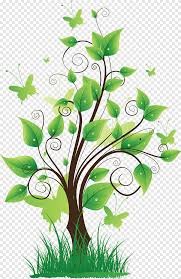 In today’s rapidly changing world, the importance of preserving and passing down traditional arts and culture to the next generation cannot be overstated. Integrating these elements into children’s education not only enriches their understanding of their heritage but also fosters creativity, empathy, and a deeper connection to the world around them. In this article, we explore the significance of traditional arts and culture in children’s education.
In today’s rapidly changing world, the importance of preserving and passing down traditional arts and culture to the next generation cannot be overstated. Integrating these elements into children’s education not only enriches their understanding of their heritage but also fosters creativity, empathy, and a deeper connection to the world around them. In this article, we explore the significance of traditional arts and culture in children’s education.
**1. Preserving Cultural Identity**
Traditional arts and culture serve as a bridge to a community’s past and a reflection of its identity. Teaching children about their cultural heritage helps them understand who they are and where they come from.
**2. Fostering Appreciation for Diversity**
Studying different cultures through their arts and traditions exposes children to the richness of human diversity. It promotes tolerance, respect, and an open-minded attitude towards people of various backgrounds.
**3. Building Empathy and Understanding**
Learning about the customs, stories, and artistic expressions of other cultures encourages empathy and understanding. It enables children to see the world from different perspectives and appreciate the shared human experiences that transcend borders.
**4. Encouraging Creativity**
Traditional arts are a wellspring of creativity. They often involve handmade crafts, music, dance, storytelling, and more. Engaging with these art forms stimulates a child’s imagination and encourages creative expression.
**5. Strengthening Family Bonds**
In many cultures, traditional arts and customs are passed down within families. Learning these traditions together creates opportunities for bonding between generations and reinforces family ties.
**6. Connecting to Nature**
Many traditional arts and cultural practices are closely tied to the natural world. Teaching children about traditional farming methods, herbal remedies, or nature-based rituals helps instill a sense of environmental responsibility and a connection to nature.
**7. Teaching History and Geography**
Traditional arts and culture offer a unique lens through which to explore history and geography. Through folk tales, traditional music, and art, children can learn about the past and gain insights into the geographical and historical context of different cultures.
**8. Promoting Cultural Preservation**
By introducing children to traditional arts and culture, we help ensure the preservation of these practices for future generations. It encourages them to take an active interest in carrying forward their cultural heritage.
**9. Enhancing Communication Skills**
Many traditional art forms involve storytelling and oral traditions. Engaging in these practices helps develop strong communication skills in children, improving their ability to express themselves and connect with others.
**10. Encouraging Critical Thinking**
Studying traditional arts and culture often requires critical thinking and problem-solving. Children learn to analyze, interpret, and appreciate the nuances of various art forms and practices.
**11. Inspiring Lifelong Learning**
Exposing children to traditional arts and culture fosters a love for learning that extends beyond the classroom. It encourages them to seek out and explore new knowledge throughout their lives.
In conclusion, traditional arts and culture are invaluable resources in children’s education. They provide a profound understanding of identity, promote diversity and empathy, encourage creativity, and strengthen bonds within families and communities. By integrating these elements into education, we empower children to become global citizens who appreciate their own heritage while respecting and celebrating the cultural tapestry of the world.






